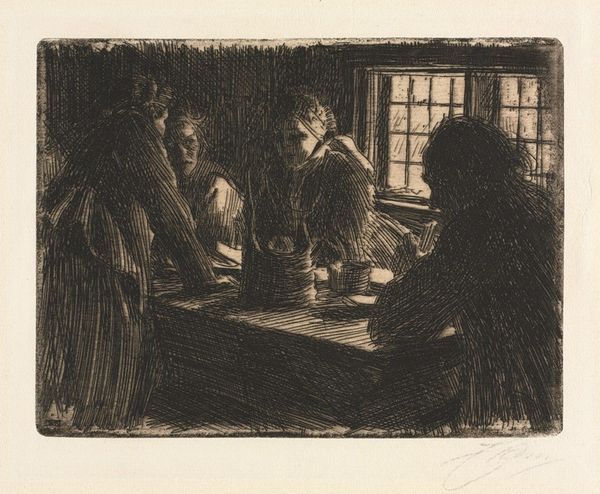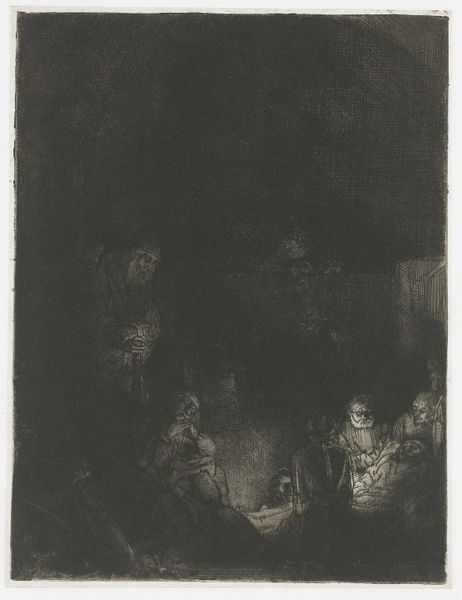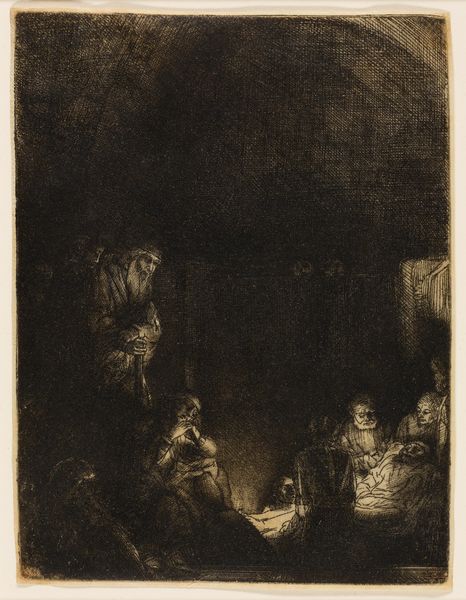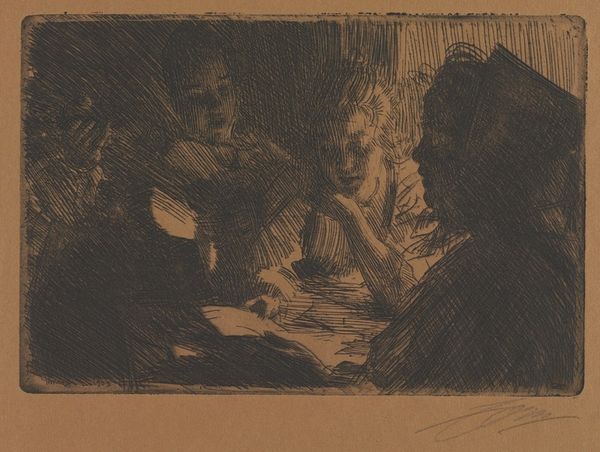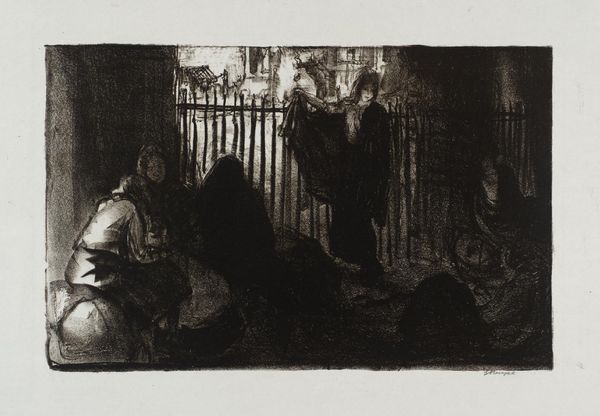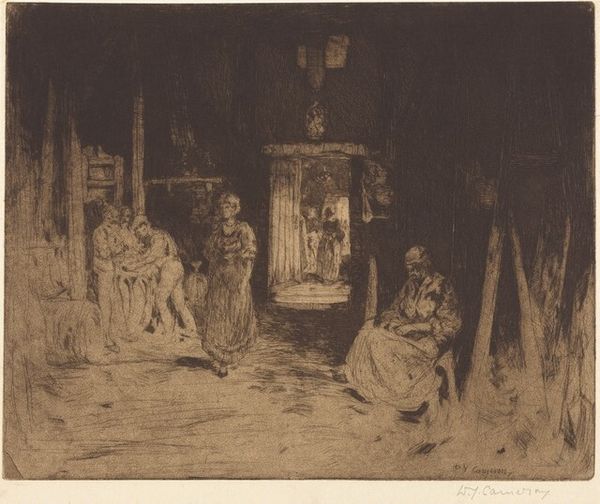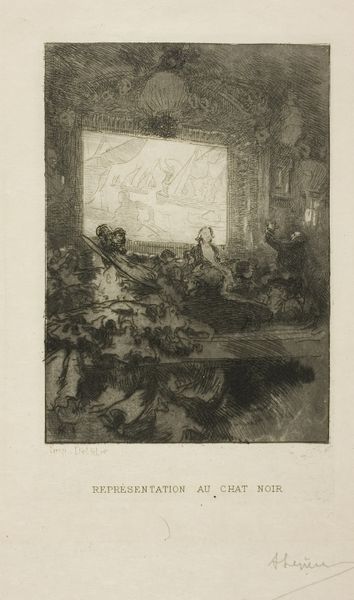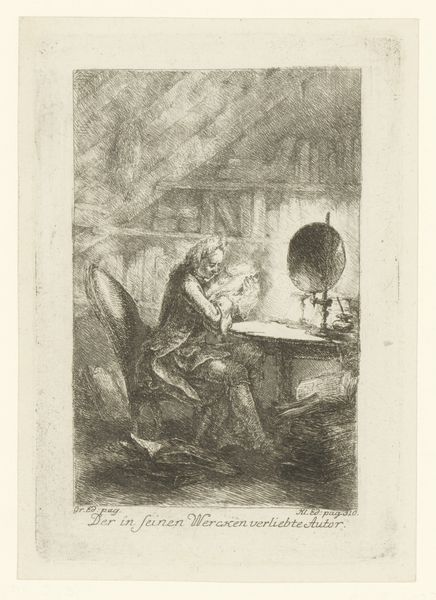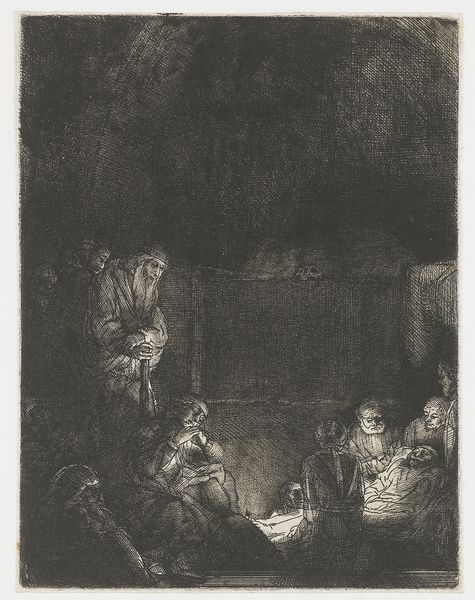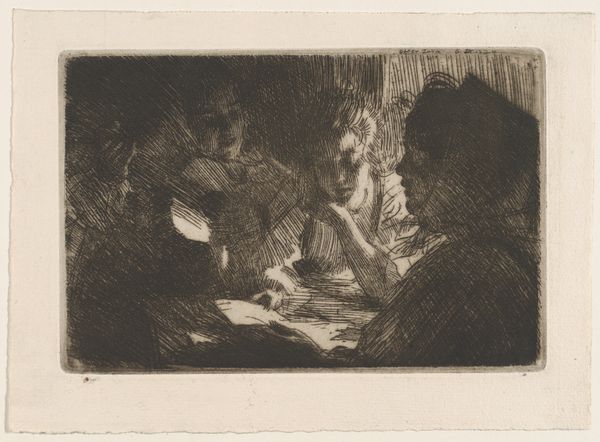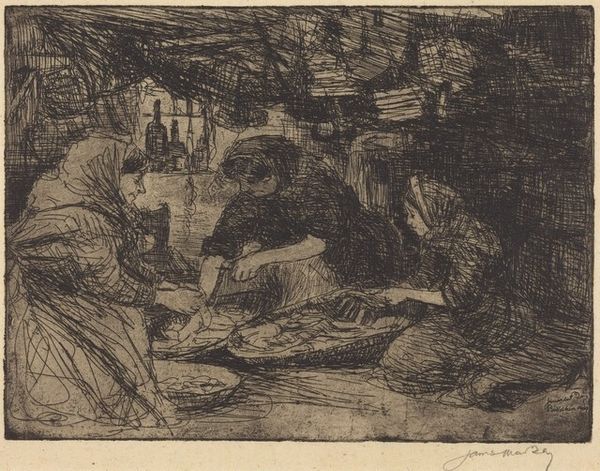
drawing, print, etching, ink
#
portrait
#
drawing
# print
#
etching
#
ink
#
symbolism
#
genre-painting
Copyright: Public domain
Editor: This is "The Visitor," an ink and etching print by Paul-Albert Besnard, from 1893. I'm struck by its somber, almost gothic quality. The stark contrast between light and shadow gives the scene a really dramatic feel. What do you see in this piece from a formalist point of view? Curator: Indeed, the dramatic effect relies heavily on the manipulation of light and shadow, creating a chiaroscuro effect that heightens the emotional tension. Note how the artist strategically uses dense, layered ink to construct areas of deep shadow that almost entirely envelop certain figures and recede in value moving away from the figures. Also, how does the density contrast to the precise etching which capture detail where the light appears to come from? Editor: It's interesting that you focus on the gradations in light. I was curious if the light was intentionally obfuscated? Curator: The obfuscation itself can be understood as a deliberate compositional choice, serving not to obscure but to accentuate specific formal elements within the piece. Does the obfuscation contribute to an understanding about its formal properties? Editor: Yes! Analyzing Besnard's etching through the lens of its formal elements—the balance of dark and light, the artist’s choice to use ink for dense, dramatic shading—deepens my appreciation of his mastery and allows the piece to resonate even further. Curator: Precisely. Through a formalist analysis, we unlock a dialogue with the work that transcends mere representational reading. What now resonates about Besnard's 'The Visitor'? Editor: Now it underscores that this is an intense technical process with complex aesthetic purposes. Thank you.
Comments
No comments
Be the first to comment and join the conversation on the ultimate creative platform.
